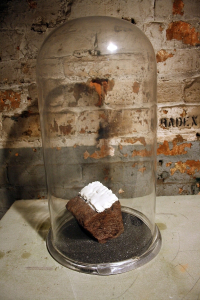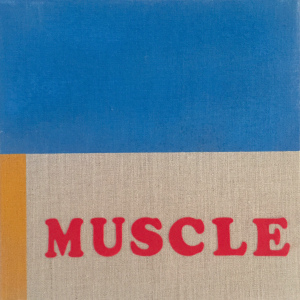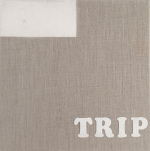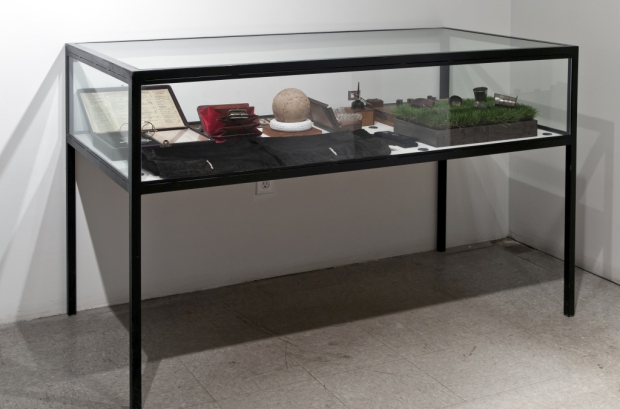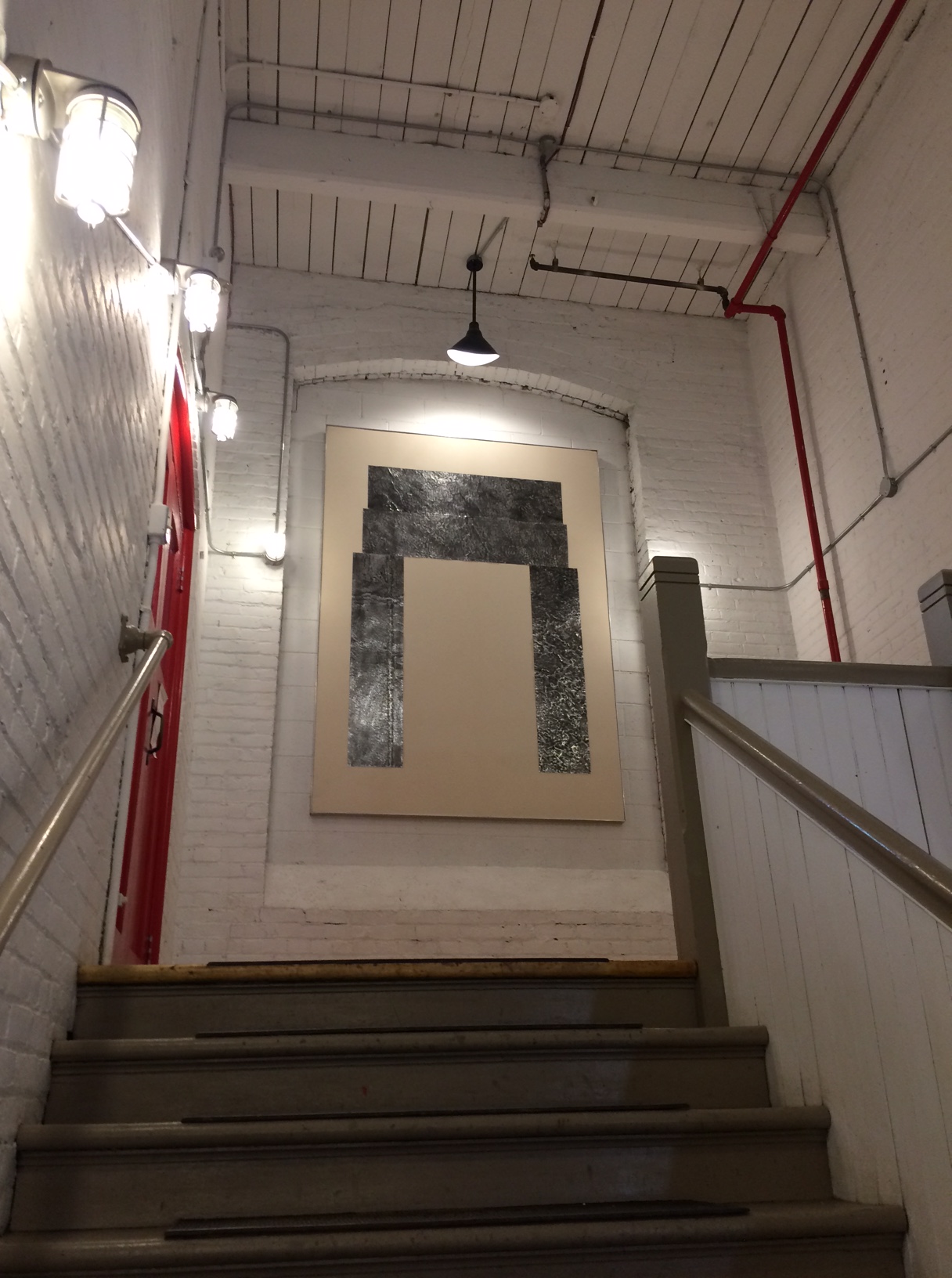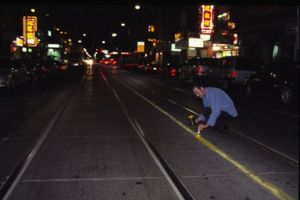nay
It is understood that a man who reads silently, mingles well in a crowd. There is an ever-present impetus held by a maker, to vehemently state what one’s work is not about. To make things clear. Nod to nod to other notions, not to smile at similes but instead, to stay on one’s own private line, calling oneself, when one is at home. Within the production of a line marker painting, a praxis that foremost is an idea-didact; articulation and explanation have been interwoven, which has resulted for some as a sort of double-blind test for painting, such that to obey one notion is to disobey another. The act of painting a single or double yellow line down the center of a traditional art support is referentially abstract due to an antecedent vernacular. Yet, the act becomes cloaked when understood to be a virtual interest in a social schematic. Undeniably through a literal use of material, there is an evidential ease with the global painted geometry, such that when the canvas information is considered in situ, mere mimesis could just be present. Urban interests and infiltrations, metaphoric memories and anxieties. Questions are raised. Disputes are practiced. Cure, placebo, or both awaiting the viewer? Compliance and familiarity are tenuously balanced by vigilance and the unexpected. A paradox is not something to strive for when outlining a painting strategy. Yet enforcing an imposition of a mental/symbolic image on a retinal one shifts the focus from pure information to that of visual perception (attributed as aesthetics) and back again. This duality is accentuated by the use of continuity and repetition, rather than contrast and interplay. From one painting to the next, in all what could be considered as painted language, line marker after all, is nominal in visual scope. How aspects of one’s own work coincides with, or differs from that of an art-historical other perhaps is nothing but circumspective performance. How the viewer relates to a transplanted schematic that is encountered everyday, perhaps only choreography. Neither, in the end, are those of preoccupation, nor are they directorial.
brr
It is understood that a man who reads mouthing the words, is never looked to for advice. That a line marking painting could be guised as being related or even interested in the Canadian Art tradition of the landscape is problematic. The only tradition I have ever thought of as a potential muse within landscape painting would be that of the topographer – an endeavour and contribution overlooked by most. The literal, factual, without interpretation world of the topographer, displaying an interest in objects and circumstance with a spirit of anti-romanticism – is pure fodder. The centuries-old link between cartography and art; topographers came from all walks of life, from soldiers to settlers, with a mandate of likeness. Characterized as empty of spirit, their accounts, executed like journeymen avid for information, prove a comfortable systemic link with my practice.It has been noted that exclusive of topography that within the history of painting, a landscape of fact is considered bourgeois, similar to that of portraiture and that without aesthetic (literary), social or political meaning attached, there is no chance to elude this convention. Even though the use of fact is wrapped in different subjective means and ends in traditional scape imagery, I would never want to link a line marker painting to thoughts of a bourgeois practice. Line marker paintings are concerned with the element of fact yet they are factually objective in intent and furthermore tied to an objective act that is proletarian in nature.Topography concerned itself with the detailed mapping and charting of the features of a small district noting surface configurations; a schema of structural entities refelecting divisions and directness of one relation to another. It seems that within the context of an art making practice at the end of the twentieth century, not exclusively painting, topography is a comfortable index, especially in the influential post-industrial light of technology, New Media and site-specific work. Line marker paintings as cultural compass cards, worldly in scope.
hood
It is understood that a man who reads out loud, is considered expendable. Perhaps the best characteristic to possess as a maker, whatever one’s background, is to remain green. Not roasted, not dried, not salted not yet lied. Not cured, not spent, not cleaned not aged, not sintered, not hindered, not showing on the gauge. Not treated, not hardened, not connected, not bound, not baked, not protected, not even yet found. Green.The place that this work resides is without aesthetic house, but not without consciousness. It does not hail from the place of graffiti or other similar notations; those are urban track marks significantly found in the most vulnerable corpus areas, emotional in intent and execution. And emotional expressions, aesthetic or non-aesthetic, often involve the new and unexpected. In opposition, line marker painting is expected and everywhere. It is institutional and its is stoic. It is civil, regulated and documented religiously as proof of its use.Even though the rational and conceptual are also capable of stirring emotion, efficiency and clarity their chosen path, there are always discrepancies between cold memory and actual experience. Line marker paintings seem to place a burden on memory through the axis of the referential. Content becomes connotatively encrusted, even seemingly contracted out, a modus vivendi agreement drafted amiably with form. Yet, it is important to appraise, that line marker paintings have not just semiotic ability but semantic as well. They refer not only within themselves (as an abstract system) but also outside themselves, as a bridge to the world. Perhaps graffiti in this mien is cousin to this work, a tag in time, if not actually in creative step.It is recorded that the first dividing line was painted on a road in conjunction with the 1911 World Fair in the United States. It was received in a phenomenal fashion. Within one’s immediate surroundings from then on, dwelling to pavement, by foot or by other, it was bread and butter, read and utter.






